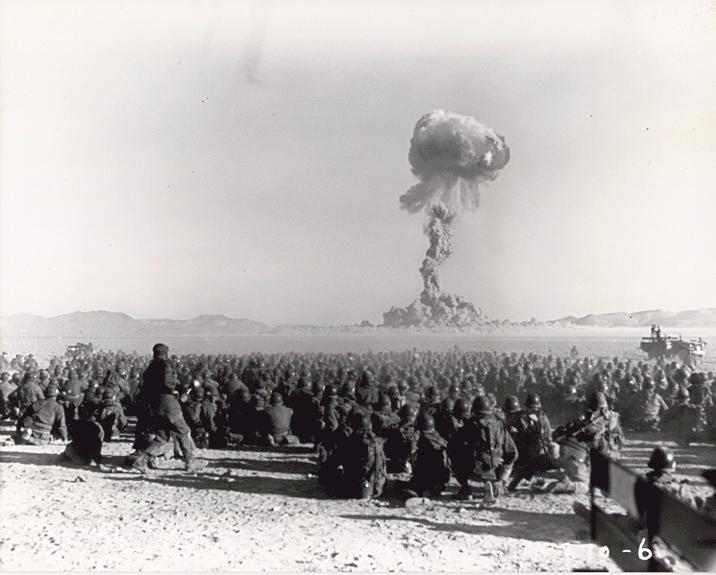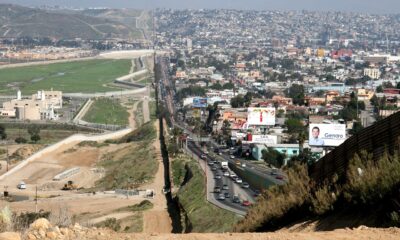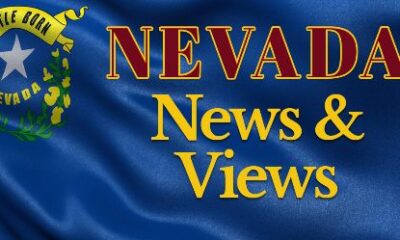[the_ad id=”25740″]

A number of nuclear tests have been done in America since history and this one’s blasted way back in 1950’s. (Courtesy: Wikimedia Commons)
(Ron Knecht) – In the early 1970s, as assistant city engineer in Urbana, where I attended the University of Illinois, I worked on bikeways, sewer systems to minimize pollution, promoting underground power and telephone lines, and other “green” projects. Later, as a university research engineer, I worked on many other environmental, energy and policy issues.
After finishing a masters project in electric generating economics – from nuclear, coal, oil and gas technologies to solar, wind, geothermal, and hydro alternatives – I testified widely as an expert witness against nukes and for alternatives. But I had already learned a very important lesson back in Urbana, and it led ultimately to understanding the central issues of environmental, public health and safety regulation.
One day, Urbana’s curmudgeonly conservative public works director had said to me: “You want bikeways, underground power and phone lines, cable TV, better sewer systems, and all that stuff – well, it’s easy and cheap.”
I was shocked.
“Go find a green field at the edge of town and design all that stuff into a subdivision from the start,” he continued. “But when you plat normal lot sizes, install standard sewers, pave roads, and begin to build, and then decide to add those things, it’s very expensive and problematic.” His point was at once profound and obvious.
Later, I helped stop a number of nuclear units around the country by showing that their plant costs, which dominated nuclear economics, were increasing rapidly and continuously. Experts testifying for utilities conceded that point, but asserted the trend had ended. But neither they nor I had a good explanation of what was causing the increases and thus why they would either stop or continue.
Working at California’s Public Utilities Commission in 1983 on nukes, I toured the Diablo Canyon plant then being completed. While there, I noticed that the building housing the reactor had a lot of beams and other structural elements and seeming junk in the corners and all around, as if thrown in on after-thought. The cause of the mess was the way nuclear regulation was applied during construction.
Regulators approved a conceptual plant design, and then engineers did the actual design as they built the plants over a number of years. Regulators had approved Diablo’s conceptual design based on modest earthquake standards. But as it was being built, they decided that higher seismic standards were required, and they mandated retrofit of structures to the new standards.
As the old public works director said: You can inexpensively design many good features into something if you do so from the start, but when you get the thing mostly built and must retrofit it, that’s expensive and often doesn’t work well. True for subdivisions, true for nukes.
I learned that all U.S. nukes faced the regulatory moving target on many safety, health and environmental fronts, and that retrofit and rework requirements had caused delays and mushrooming costs throughout the industry.
All that raised the question of just what levels of regulation are appropriate, and how far we should push such requirements. That area is where our policies and practices fail even worse. Economists understand that we should raise regulatory requirements as long as the social benefits of each additional measure required exceed its costs – but no further. That is, the basic regulatory principle is social cost-effectiveness, which promotes the overall public interest: namely, maximizing human wellbeing.
This failure of nuclear regulation actually characterizes much public health, safety and environmental regulation. Essentially, the rule we use is that if a measure is technically feasible, it’s required, no matter how costly. For example, best available control technologies for pollution.
Policy-makers adopt measures to placate environmentalist, alternative-energy and public-health special interests that promote them regardless of how destructive they are to the public interest. When the failure to adhere to the social cost-effectiveness rule is compounded by requiring retrofit, it’s a very expensive combination.
Environmental, public health and safety movements had their genesis in sensible ideas that attracted people like me, such as not letting polluters dump unreasonable “negative externalities” on others. But they long ago metastasized into a religion rampantly promoting policy excess, thereby alienating sensible folks. For the wellbeing of future generations, we must rein in this destructive foolishness.
Ron Knecht is Nevada State Controller.




Facebook
Twitter
Pinterest
RSS